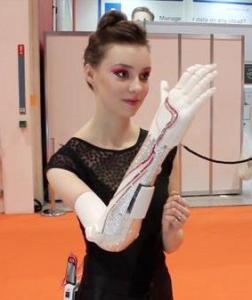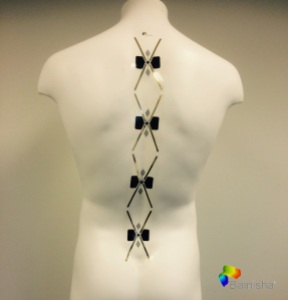by Nitin Dahad
Wearable technology and devices appear to have been making all the headlines so far in 2015. But for those of us focusing on the technology or the devices, we might be missing the big picture. The market really is taking off in a big way, and huge opportunities are still opening up in all sorts of areas – from health and fitness, to consumer retail.
For the vast majority, the Apple Watch launch naturally focused on devices – and the resulting headlines like ‘Apple Watch, Britons still not convinced by wearable tech’. According to this article, “Just 25 percent people believe that wearable technology will improve their day-to-day life, a new survey shows, while one-in-10 Britons thinks that wearable technology will actually make their lives harder.”
But you wouldn’t think this if you took a walk around the Wearable Technology Show in London recently, where it was clear that there is a whole ecosystem evolving around health and wellness, and that the focus was on the benefits of the devices rather than the devices themselves. A total of 3,872 people attended the event, which may not sound that big a number, but all the major parts of the wearable tech ecosystem were represented.
Exhibitors included companies of all sizes and in all stages of wearable development, from technology giants like Intel and Samsung, through to tiny start-ups showcasing inspirational prototypes as they hunt for funding. Other companies included Cambridge Consultants, 4iiii, Mio, Practech, Silicon Labs, Shimmer, Optinvent, O-Range, TE Connectivity, Xensr, Damson Audio and AIQ Clothing. Speakers included Martian, Pebble, Jawbone, Samsung, Jaguar Landrover, Indiegogo and Amazon. There was even a developer hackfest and 3D print lab.
It was clear that wearable technology is already here and is becoming more pervasive. There were many companies producing fitness trackers and watches – who mostly welcomed the Apple Watch launch. Elisabeth Dickinson, CEO and founder of Mio Global, which makes heart rate training, watches and activity trackers like the Mio Fuse band, said, “It’s good as it generates awareness. With the Apple Watch, there is a possibility for disruption as they are putting out a platform that can potentially drive more innovation in the market, and drive the industry.”
She added that the Apple Watch wasn’t really a competitor to their product as it targets a completely different type of user – Mio Global addresses performance athletes and swimmers who need to access accurate heart rate information at high performance. “I’m having a hard time seeing how Apple Watch would be used in such use cases,” she added.
Beyond fitness tracking – applications aplenty
Wearable technology is much more than just fitness trackers – the list of potential applications and the ability to benefit people would in many ways appear limitless.

Take for example people who’ve lost their hands – there are an estimated 11.4 million hand amputees worldwide, according to Open Bionics, a startup based inside the Bristol Robotic’s Laboratory’s Technology Incubator (UK) – and this is where low cost robotic hands can make a difference. The company uses 3D printing to make robotic hands more accessible and the manufacturing process flexible, producing lightweight low cost hands with unique gripping ability.
Samantha Payne, COO of Open Bionics, said that the cost could be brought down to around UK£1,000 – significantly lower than the typical price people pay today, which could be anything from UK£25-50k. At the London show, the company demonstrated a Swarovski crystal bionic arm printed on the morning of the show itself for Grace Mandeville, a lady who didn’t have a right arm.
Samantha Payne said that the idea behind the Swarovski hand was to show off the possibilities for prosthetics within 3D printing. “We printed Grace a socket and robotic hand in three days, and because 3D printing is so affordable we can add Swarovksi crystals and create something really eye-catching that will not break the bank. We also added four fibre optic wires to the socket so that whenever Grace closes her hand, a blue light would shoot up her 3D printed arm.”
“Prosthetics are entering the realms of fashion and we wanted to show how bionic prosthetics can be functional and fun,” Payne adds. “We’ve been very experimental with Grace’s hand. This is a completely new socket design and this is the first time we’ve experimented with placing the EMG sensors above the elbow. Grace is actually controlling her hand by the muscle signals from her back. The idea is to give hand amputees more option and a choice to have something they’d get some enjoyment out of wearing.”
For pregnancy monitoring, Israeli company Nuvo-Group, which develops wearable, sensor-based technologies that utilize big data analytics to provide customized solutions for parents to better connect, monitor and bond with their child during and after pregnancy, showed off two new platforms at the London show.
One is Ritmo Beats, which enables listening and recording of both fetus and mother’s heartbeats without the need to manually search for a signal as is the case with traditional Doppler devices, connecting via Bluetooth to a smartphone app. The second is PregSense, a wearable device for continuous and accurate monitoring of vital pregnancy data – enabling early detection and diagnostics of symptoms that may cause complications during pregnancy; it also uses a smartphone app and makes data available to doctors and researchers in real time as required.

Useful in areas like combating back pain or in training for bowling in cricket are a couple of the applications that were shown by Bainisha, a Belgian company that uses back motion sensor technology to differentiate between almost identical but slowly deteriorating body motions, using high definition comparative gait analysis. This can be used to detect the first signs of Alzheimer’s disease for example, or other neuro degenerative diseases.
Motion tracking was being demonstrated in many applications – for example there was Tarquini Leone, a smart shirt for your golf swing. The shirt analyzes movement during a swing, and can provide instant feedback via the smartphone app, to help improve swing.
In the ‘wellbeing’ category, Toronto based innovator in brain sensing technology, Interaxon, demonstrated Muse, a brain fitness headband and app which incorporates several EEG sensors to measure brain activity and help train your mind and improve specific cognitive skills.
In summary, the wearable technology ecosystem is rapidly evolving and this was clearly evident in London this month. While there are some who think wearable tech means watches and fitness trackers, what we are seeing is that the technology will become much more useful for a multitude of health and wellness needs, even beyond what is imaginable today.